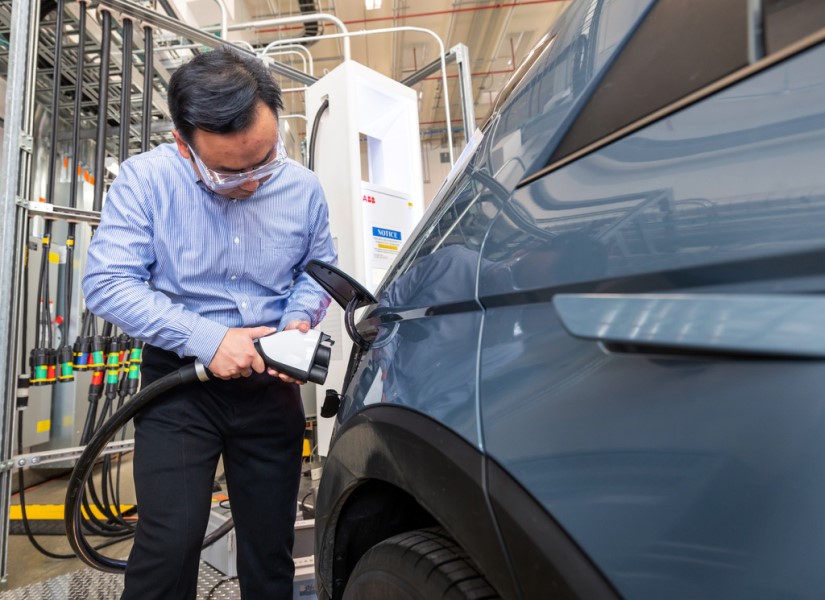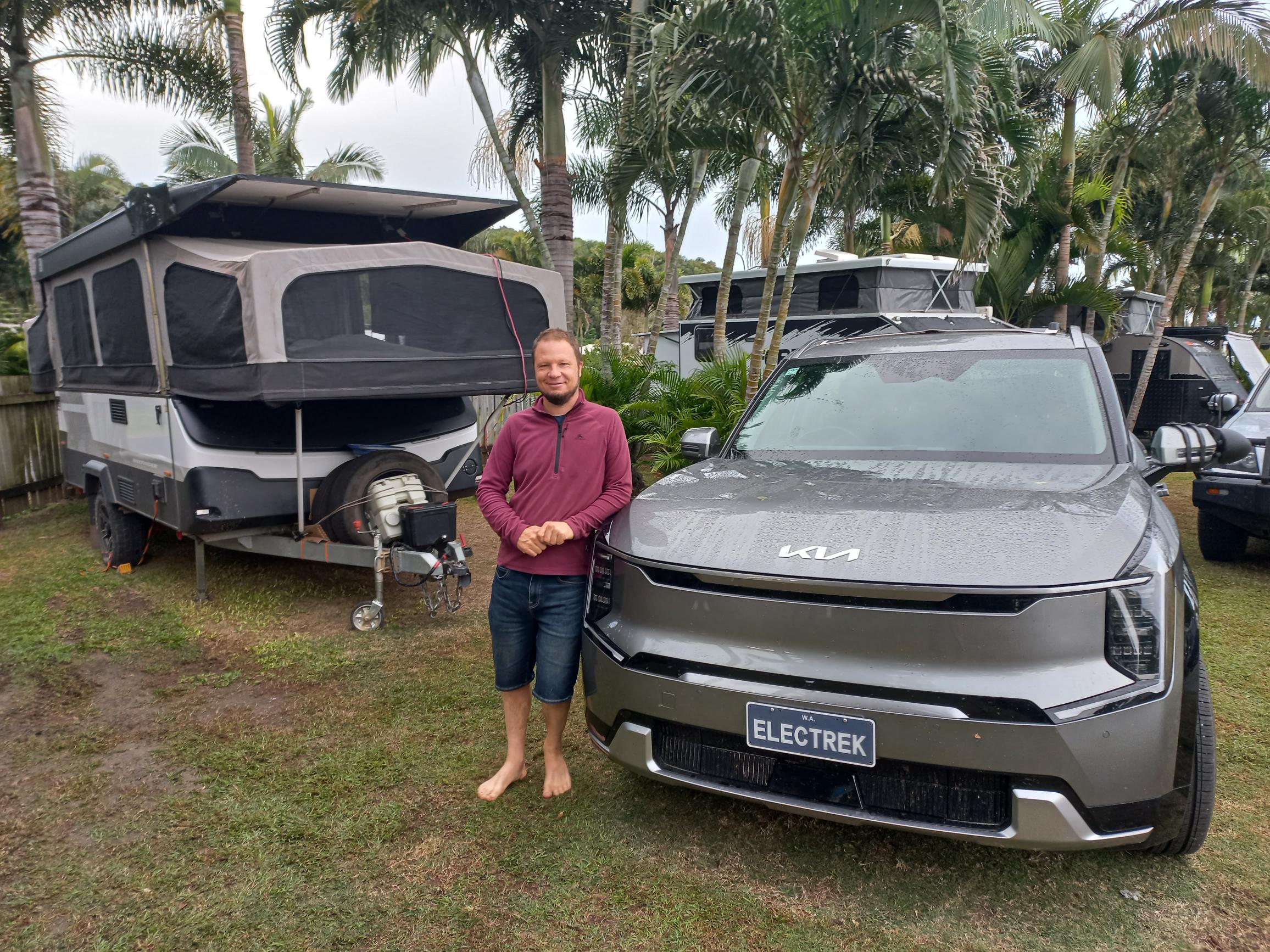Sign up for daily news updates from CleanTechnica on email. Or follow us on Google News!
Widespread electrification initiatives are increasing the demands on America’s aging power grid, but utilities and consumers may have an unlikely ally in electric vehicles (EVs).

Vehicle-to-grid charging programs may help support the electric grid in the transition to sustainable transportation. Parked vehicles can supply power back to homes and communities during periods of peak energy demand. Photo by Werner Slocum, NREL.
Research from the National Renewable Energy Laboratory (NREL) and Leiden University’s Institute of Environmental Sciences in the Netherlands evaluates how vehicle-to-grid (V2G) bidirectional charging programs may offer short-term grid storage opportunities, as detailed in a Nature Communications journal article.
Across the country, Americans are facing rolling blackouts and power failures caused by severe weather events. One contributing factor in these stressful scenarios is that U.S. electricity consumption tends to follow predictable demand cycles that do not always coincide with energy supply. For example, solar panels generate electricity from sunlight, but energy demand—particularly during winter’s shorter days and colder nights—tends to rise in the evenings after the sky goes dark. In response, utility companies have introduced time-of-use rate structures that charge consumers more during peak demands.
NREL researchers are exploring how energy systems of the future might offer relief. For example, energy stored in fully charged EV batteries could offer a distributed network of backup power, using V2G programs to supplement power to homes and communities during periods of peak demand. Once energy demand levels off, EVs would fully recharge in anticipation of a new day.
“Picture EVs as mobile battery storage systems. EVs can absorb excess power when available and store that energy for future needs,” said NREL’s Paul Gasper, a battery degradation scientist. “There is potential to store renewable energy within the global EV fleet to improve the flexibility and resilience of our power grid.”
NREL Evaluates V2G Impacts and Opportunities for EV Owners
As part of this study, Gasper’s team used NREL’s advanced modeling and analysis capabilities, including the Future Automotive Systems Technology Simulator (FASTSim), to explore how future EV deployment, battery degradation, and owner participation would impact the global EV battery capacity available for grid storage. This research helped determine how EV owners’ driving and charging habits impact the available energy storage capacity. Although market participation and consumer buy-in pose significant barriers to successful V2G implementation, further NREL research shows how V2G systems could benefit EV owners.
Using state-of-the-art battery degradation models, NREL experts evaluated how V2G programs would affect the health and lifetime of EV batteries. This approach combined real-world testing and temperature models to predict how battery health changed over time for different climates and driving behaviors worldwide. Findings indicate that EV owners may extend their EV batteries’ life by participating in grid services.
“When parked EVs sit fully charged for an extended period of time, the batteries degrade more quickly than if they were at a lower state of charge,” Gasper said. “Participating in V2G programs lowers the average state of charge while the vehicle is parked, which can help batteries stay healthy and last longer.”
Infrastructure Updates Needed To Take Full Advantage of V2G Opportunities
Researchers are optimistic; however, our existing grid infrastructure will need significant updates to make this vision a reality. NREL researchers recently released the 2030 National Charging Network report, a quantitative needs assessment for a national charging network capable of supporting the U.S. transition to EVs. With a mid-adoption scenario of 33 million light-duty EVs on the road by 2030, this study projects that the nation will need 28 million charging ports.
“V2G charging services will increase demand across the charging infrastructure and prompt changes to our behavioral patterns, potentially increasing midday use of charging ports to capture excess energy generated from solar panels,” said Andrew Meintz, EV grid integration researcher at NREL. “Our analysis must continue to adapt to the evolving opportunities and impacts of future EV charging needs.”
In the meantime, Gasper and his team are excited to continue pairing battery degradation models with social and economic analysis to help make EV ownership more attainable for everyone.
Learn more about NREL’s energy storage and sustainable transportation research.
Originally published on NREL. By Rebecca Martineau.
Have a tip for CleanTechnica? Want to advertise? Want to suggest a guest for our CleanTech Talk podcast? Contact us here.
EV Obsession Daily!
I don’t like paywalls. You don’t like paywalls. Who likes paywalls? Here at CleanTechnica, we implemented a limited paywall for a while, but it always felt wrong — and it was always tough to decide what we should put behind there. In theory, your most exclusive and best content goes behind a paywall. But then fewer people read it!! So, we’ve decided to completely nix paywalls here at CleanTechnica. But…
Thank you!
Tesla Sales in 2023, 2024, and 2030
CleanTechnica uses affiliate links. See our policy here.





